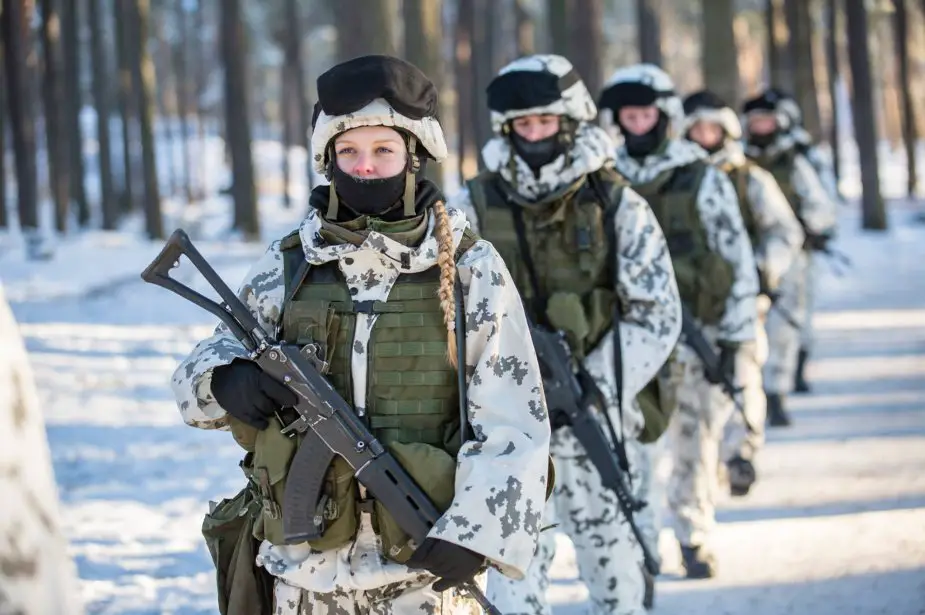Breaking news
Analysis : What does Finland bring to NATO military strength?.
Cooperation between NATO and Finland, began when Finland joined the Partnership for Peace (PfP) program in 1994 and the Euro-Atlantic Partnership Council (a multilateral forum for dialogue that brings together all Allies and partner countries in the Euro-Atlantic area) in 1997. Finland, with armed force forged for winter warfare joins NATO on April 4, 2023.
Follow Army Recognition on Google News at this link

Finnish reservists during training in 2019 (Picture source topwar.ru )
Finland, thanks to its geographic position Finland's accession to NATO significantly enhances the Nato's strategic posture by providing a pivotal geographic advantage along Russia's northwest frontier and the Arctic's gateway. This move not only secures a critical flank against potential threats but also extends NATO's reach in the Arctic, a region of growing strategic importance due to its untapped natural resources and emerging shipping lanes. Finland's well-equipped military, coupled with its deep knowledge of Arctic conditions, offers NATO valuable capabilities in cold-weather operations, thereby strengthening the alliance's northern defense and enhancing its collective security framework.
Leading a transition from old Soviet equipment to modern Western equipment, Finland has adopted NATO standards to improve interoperability between forces. One example is the nationally made APC like the Patria AMV XA-360, which is progressively replacing the old Soviet MT-LB. Additionally, for Army personal weapons, the old AK74-based 7.62 RK 62 created by SAKO Weapons Armory is being replaced by the FN Herstal SCAR-H or the last but not least use of German Leopard 2A6 and 2A5 tanks on active duty.
According to the Finnish defense Doctrine, the Air and Navy are designed for territorial protection. Finnish navy is a green water navy, concept means a maritime force that is capable of operating in its state's littoral zones and has limited competency to operate in the surrounding marginal seas. The Navy is mainly composed of landing craft, amphibious ships, or fast assault vessels. Overall, Finland's military capability compensates for a slight lack of expertise within NATO, particularly in Arctic warfare and amphibious military capabilities, according to the International Institute for Strategic Studies. The naval forces of NATO, especially from Western Europe, have developed a deep-water navy. Thus, the navies of the Nordic countries, including Sweden, Finland, and Norway, serve to complement the operational capabilities of the alliance.
On December 10, 2021, the Finnish Air Force announced the F-35s are set to replace the Air Force’s aging McDonnell Douglas F/A-18 Hornet jets. These planes are scheduled to retire by 2030. The first batch of the F-35s on order is due for delivery and then deployment to Arctic air bases in Finland’s Lapland region by 2026
According to its military adaption to NATO standards, its geographic position, and winter warfare-oriented forces Finland represents a strategic ally. One con is the structure of the Finnish army, based on a majority of reservists. Finland's army comprises 24,000 active duty personnel but can mobilize, thanks to compulsory conscription, more than 870,000 reservists.
In conclusion, Finland's history is deeply intertwined with Russia, through common conflicts such as the Winter War and the presence of the Soviet Union, which fuels a martial stance towards Russia. Politically, this position is advantageous for NATO, which can benefit from strategically placed military, naval, land, and air bases facing the threats that emerge on the alliance's eastern borders. Finland joining NATO thus allows the alliance to pre-deploy international forces in the region, such as the EAGLE mission in Romania.
Defense News March 2024























